We are meant to move. Movement grounds and centers us. It clarifies thinking. — Julia Cameron
Walking London
It’s a light grey May morning—one of those I call shadowless London. It’s cold, but very green. I put one foot in front of the other, and then another. I keep walking. This is my go-to route: about 3km from Dalston down to Regent’s Canal, looping back through De Beauvoir Town. I stop along the way and sit on a bench in Albion Square Gardens to draw. These walks are becoming something I crave daily—and a powerful creative tool.
When I lived in Islington and worked in Fitzrovia a few years ago, I used to take the bus to work in the morning, but I’d walk home in the evening, a journey of about 45–50 minutes. Surprisingly, with time, when so many people dread their commute, that daily walk back became my favourite time of day. I’d wander home with my thoughts, observing the city, feeling the energy of my legs moving, and watching how the trees and the light changed with the seasons. I did it entirely in silence—just me and my thoughts. No podcasts, no music. The soundtrack was simply the blend of city sounds, silences some times, and quieter moments in between.
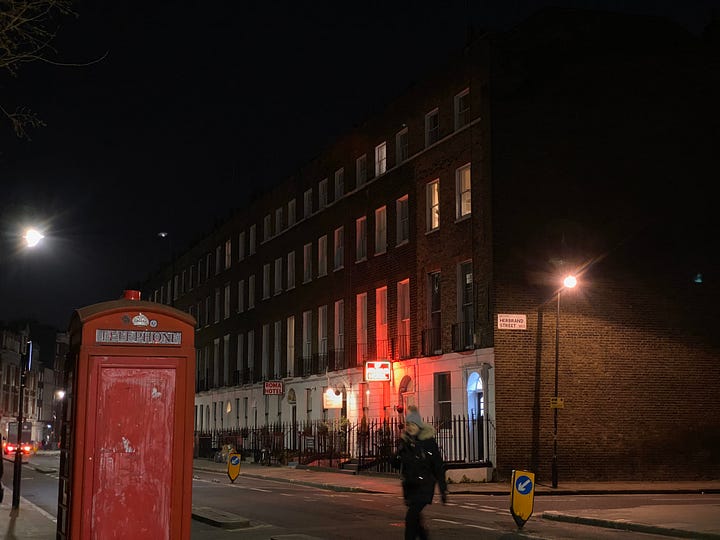
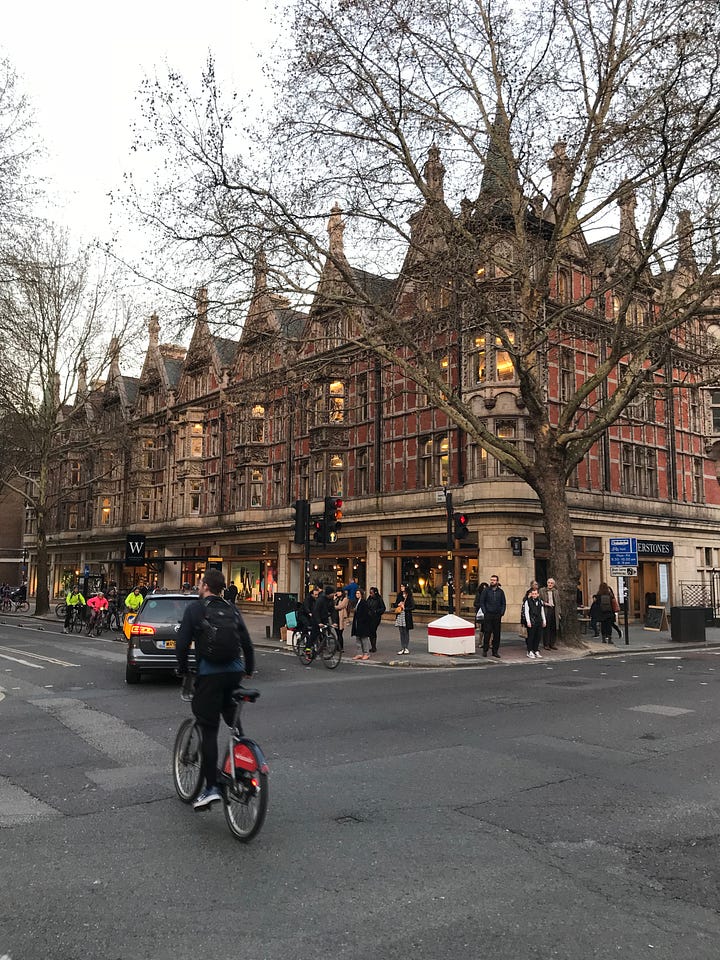
Walking as Moving Meditation
Julia Cameron writes about walking as a powerful creative tool. In her books Walking in This World and The Artist’s Way, she explores how walking helps us access creativity, describing it as a moving meditation—a way of linking the physical body with creative energy.
Cameron recommends taking a weekly 20-minute solo walk to listen to your inner self and allow ideas to surface. She also suggests focusing your walk around a specific question or topic—almost like having a proper conversation with yourself. A quick note: another wonderfully creative type of walk is going on a long stroll with a friend or a partner, talking as you walk instead of sitting in a bar.
But let’s focus on the solo walk for now.
Sometimes the best way to move through a creative block is simply to move. Walk. Let the rhythm of your steps untangle the knots in your thinking. — Julia Cameron
A Habit to Fuel Creativity
These days, the way I like to use walking as a creative tool is by doing it alone—at least for half an hour, covering roughly 3 to 5 km. I tend to follow familiar routes around the neighbourhood. For me, this is important, as it’s a way to focus on my own thoughts rather than feeling distracted or anxious about where to go. Walking the same places again and again helps me connect more deeply with myself—exactly the kind of moving meditation Julia Cameron describes.
As for the timing, sometimes I head out early in the morning for a shorter walk or after lunch when I work from home. On weekends, I might leave after breakfast or around midday for a longer stroll along the canal. Now that we’re approaching the summer solstice and the days are getting longer, I often walk in the evenings—either after working from home or after dinner. Unlike when I used to commute back to Islington and took the exact same route at the same time every day, my walking routine now is more organic. I go when my body asks for it (which is almost daily) or whenever I find a quiet moment for myself. Or even when I am too much in my head and need to find some answers to personal questions.
The walk supports my creativity in several different ways:
1. A Moving Meditation
First and foremost, it’s a way to exercise both physically and creatively—to enter that state of moving meditation Cameron talks about and that leaves me feeling better afterwards. There’s something energising about soaking up daylight and getting the body moving. It’s good for our overall wellbeing.
Many authors have written about the benefits of moderate exercise and being outdoors, especially in contact with nature. Writers and artists have long indeed recognised the benefits of walking for improving their creativity. Apart from Julia Cameron; Rebecca Solnit in Wanderlust, Frédéric Gros in A Philosophy of Walking, and Robert Macfarlane in The Old Ways, all speak of walking as a path to deeper thinking and seeing. In writing this post I discovered a book written by Virginia Woolf called Street Haunting, which is about the joy of walking through the city streets of London.— I must read it!
2. The Magic of Ideas
Every time I go for a walk, I return not only feeling more positive and uplifted, but also with a bunch of new ideas. While walking, I generate a lot of thoughts—it’s as if I start writing in my mind. I often sit on a bench to jot things down and sketch. It’s incredible how, after several minutes of walking, a kind of mental fog begins to lift, and ideas and answers emerge—suddenly and naturally—just like magic. Julia Cameron might say it’s the result of letting go and connecting with a higher creative source, becoming more in tune with both nature and ourselves. And she’d be absolutely right.
3. Looking Closer
Finally, going for a longer walk also sharpens my observational skills, especially when I repeat the same route over and over. Each time I pass familiar buildings, trees, or gardens and really look—again and again—I begin to notice subtle changes that would be invisible on a single walk where everything is new. I start to see how light colours certain details, and how an interesting visual frame emerges from a variety of shifting views.
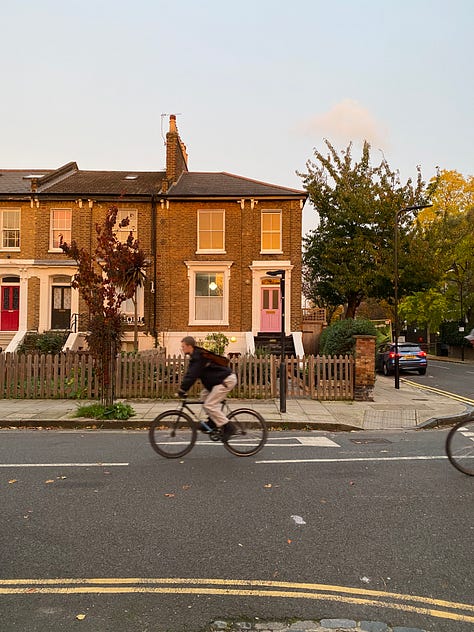
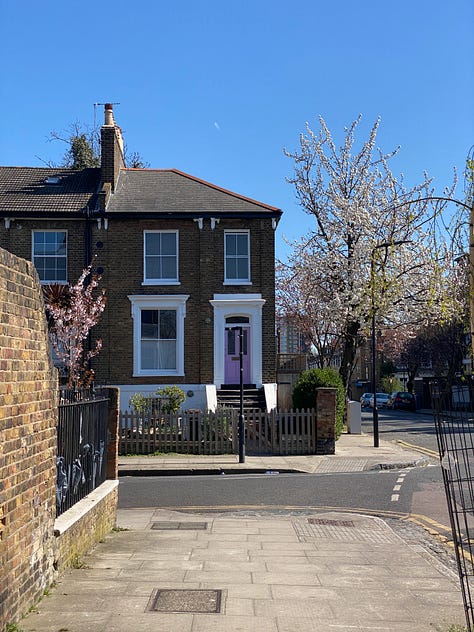
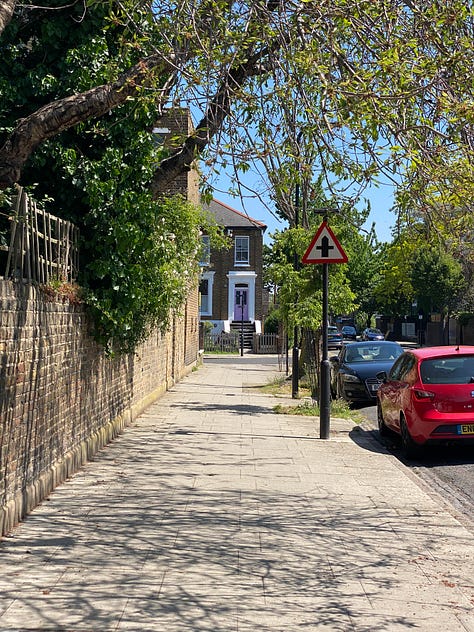
If you go for a walk, purposefully as a creative tool, I’d recommend walking for long enough, and along a route you know well, so you don’t have to keep checking maps or worrying about getting lost (I’m a bit of the anxious type, so this works for me — but perhaps some of you, like my partner, will find more joy in exploring new places). From my experience, it’s only after about the second kilometre, when you’ve been in motion for a while, that this magic really starts to happen.
An Unexpected Walk Home
These days, I usually take the Tube and Overground back home. However, something unexpected happened this week: a big storm swept through London, dropping hail and causing power failures across several public transport lines. When I took the Tube back from work, I discovered that all Overground trains were cancelled at Highbury & Islington station.
I could have taken the crowded bus number 30, but the afternoon was so beautiful after the rain, with the ground wet, and a low sun peeking through the clouds, that almost instantly I made my choice and set off on foot back home towards Dalston—about half an hour walk, perfectly doable.
This small disruption—or rather, lucky occurrence—brought me unexpected joy and a wave of nostalgia for those days when I used to walk home regularly. It also brought clarity to a few lingering questions I had been turning over in my mind and I also got a few ideas and frames to sketch that evening. It’s surprising how just half an hour of walking can feel so grounding, even healing.
Whether it’s a shadowless grey morning or a sunny afternoon, walking always brings me back to myself. Step by step. Sketch by sketch.
When in doubt, always, always walk.
✏️✨
Happy sketching!
Ana

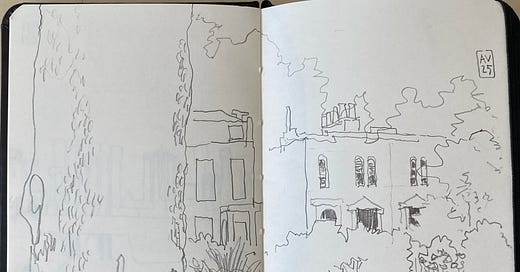


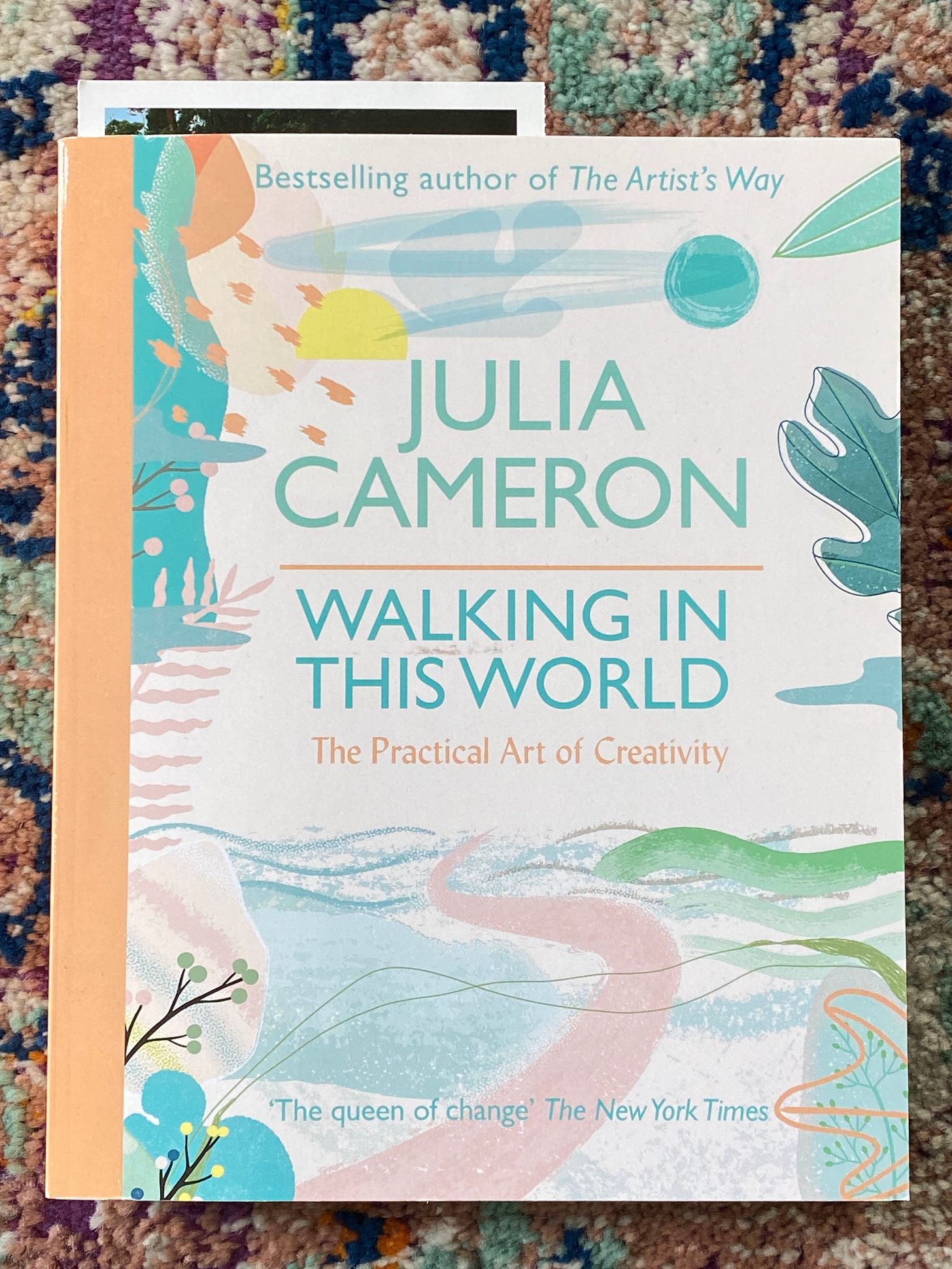
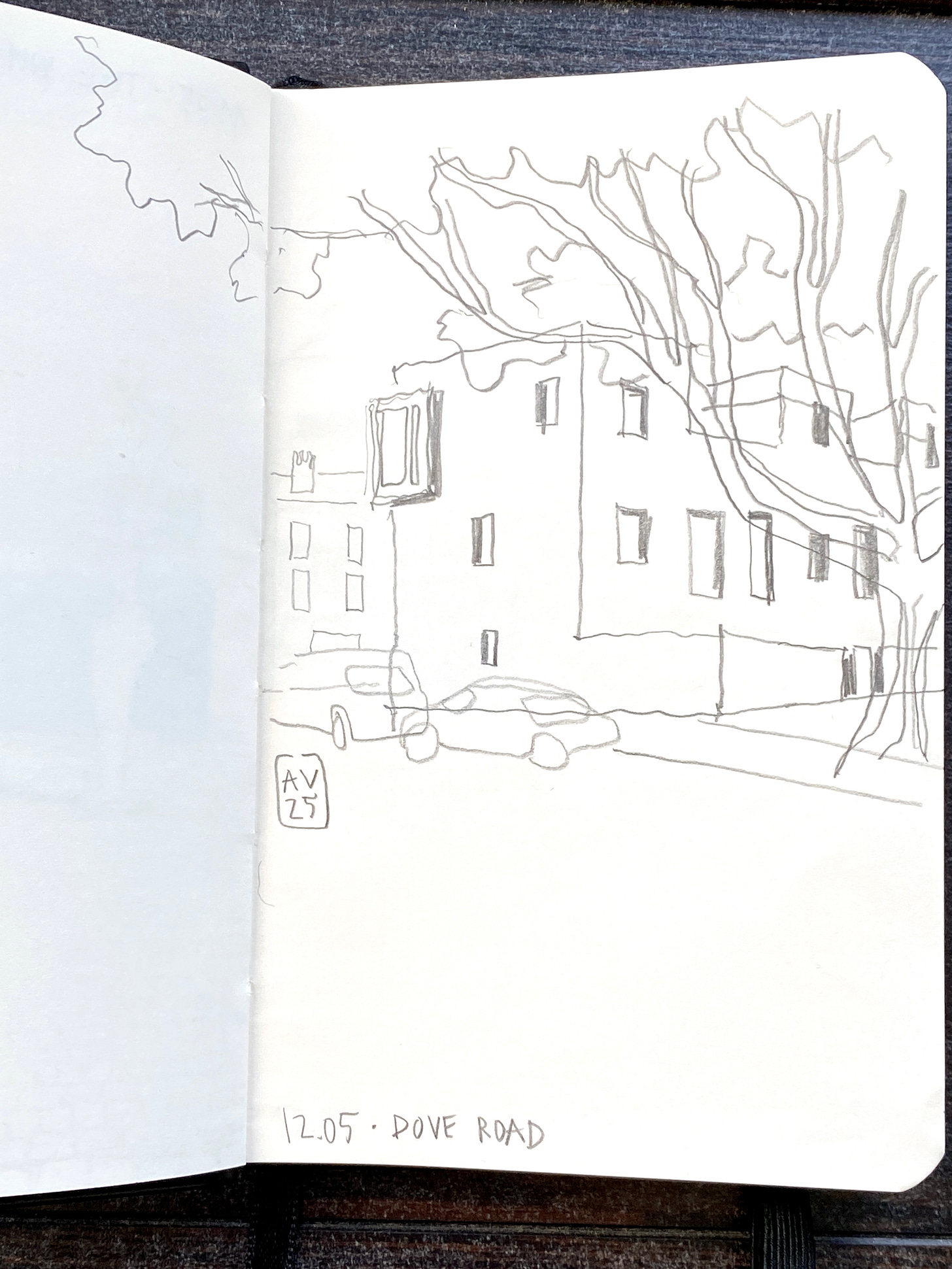
Walking in the rain is surprisingly pleasant. I'd love to have a go at drawing rain.
What a lovely meditation on walking. I love walking in London! Last October I walked around 36 miles over the days with a good friend and discovered all sorts of places. Closer to home, I walk daily with my next door neighbour and her dog, same route every day and I love seeing things change. There’s also a great book on the history of women walking, Women Wanderers I think it’s called.